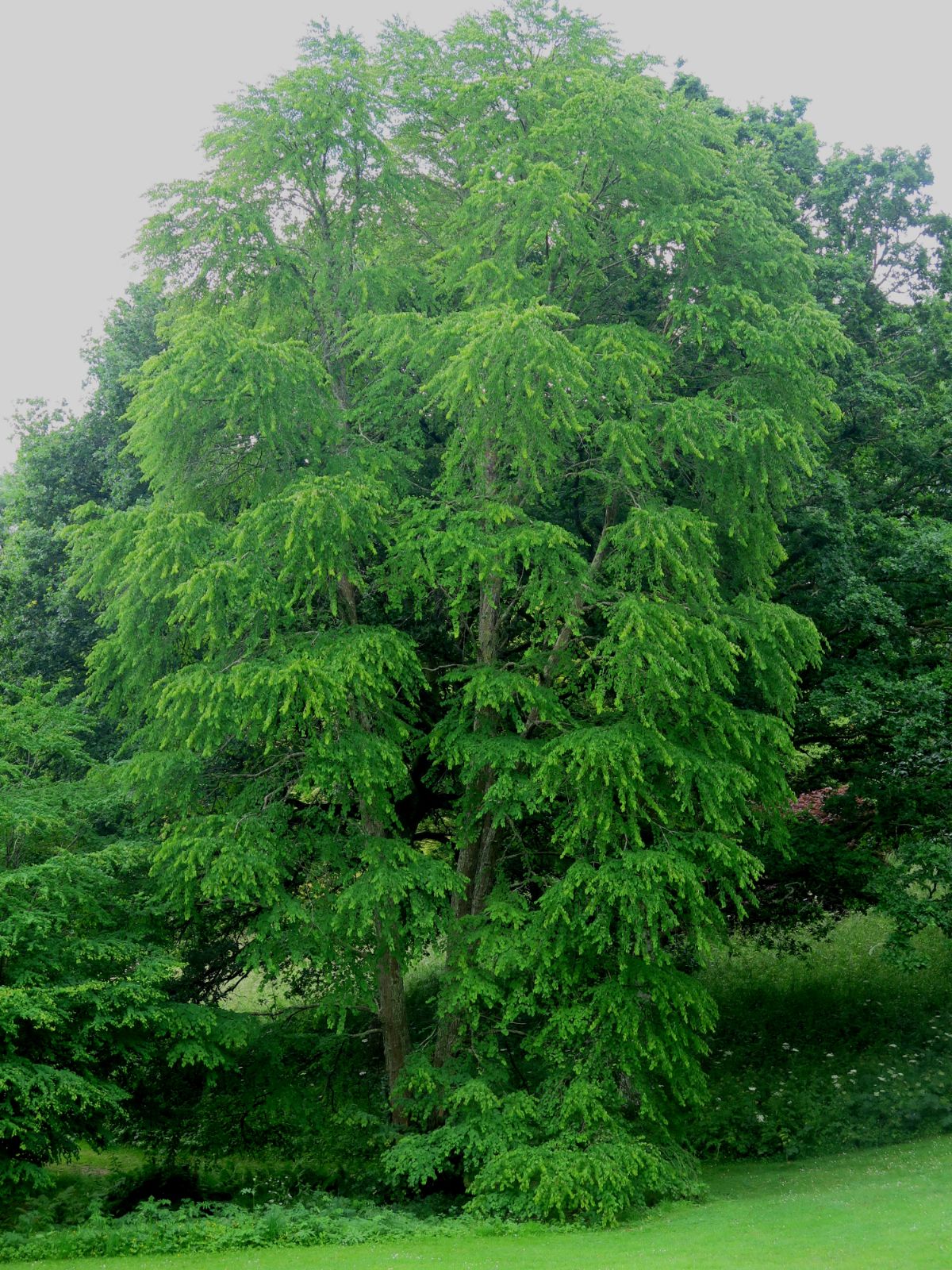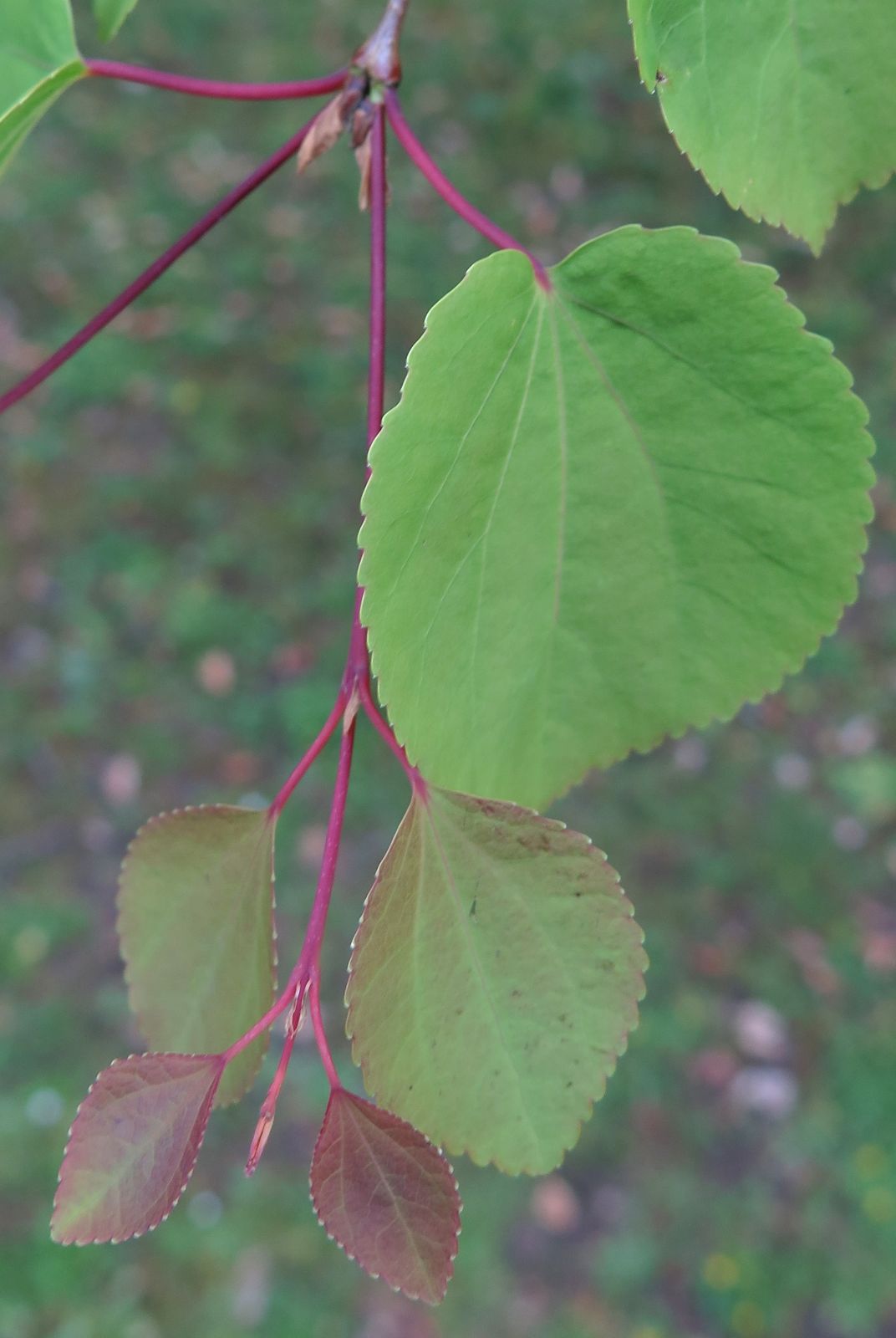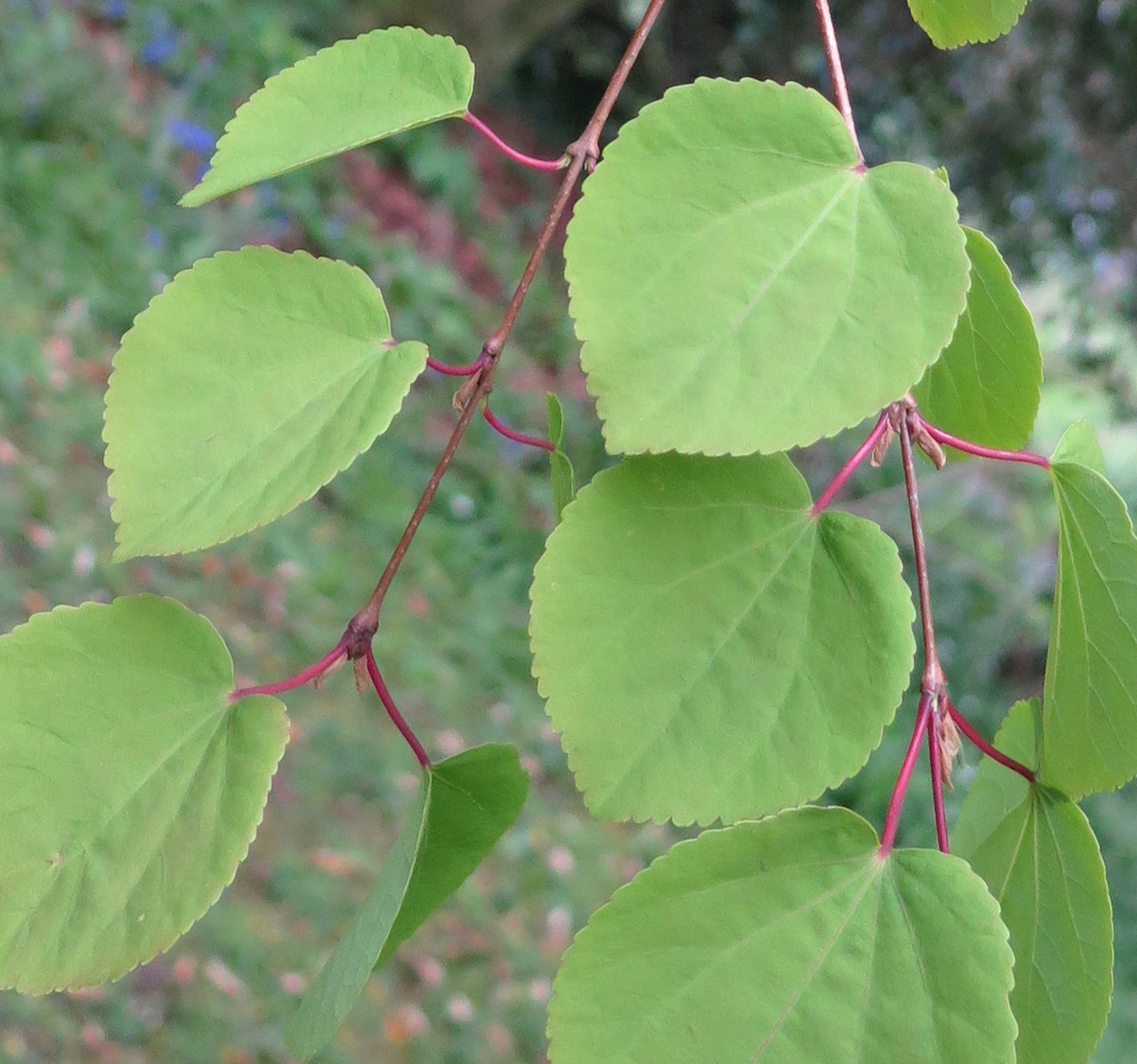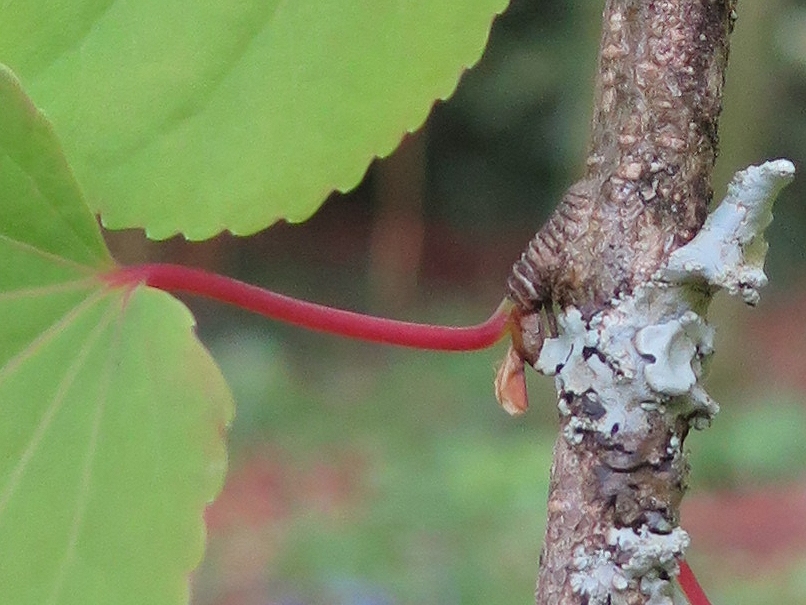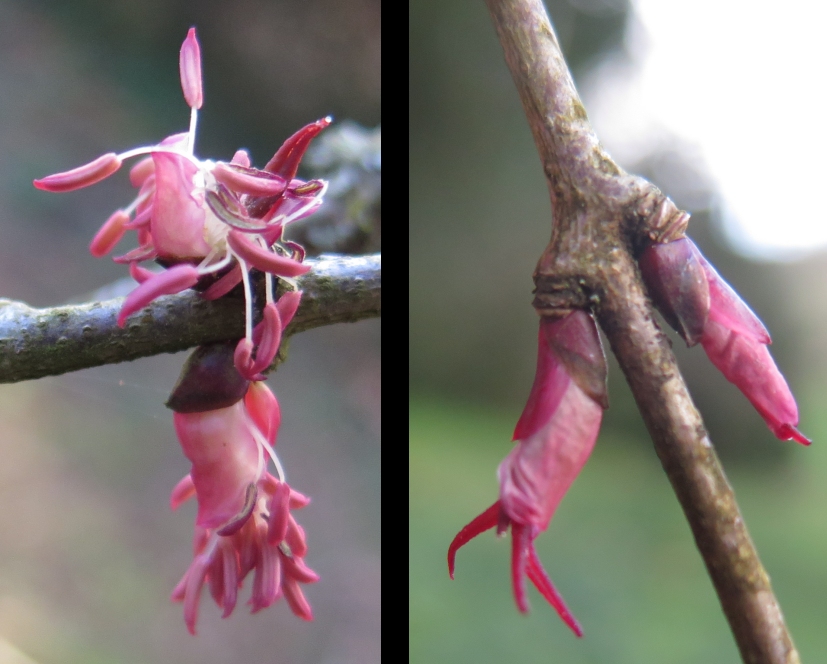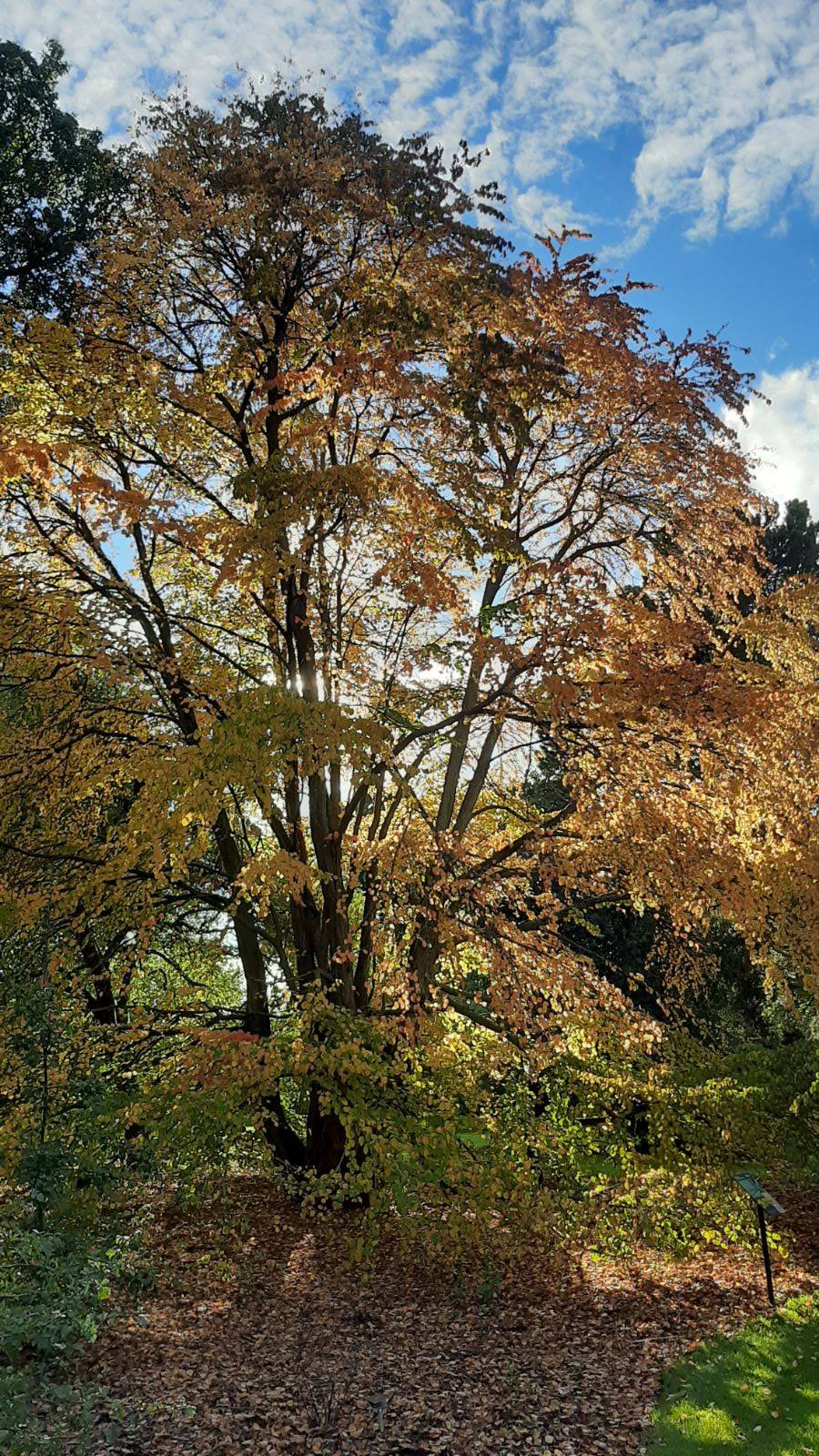Cercidiphyllum
Sponsor
Kindly sponsored by
William & Griselda Kerr
Credits
Julian Sutton & John Grimshaw (2021)
Recommended citation
Sutton, J. & Grimshaw, J.M. (2021), 'Cercidiphyllum' from the website Trees and Shrubs Online (treesandshrubsonline.
Family
- Cercidiphyllaceae
Common Names
- Katsuras
Two species of deciduous, dioecious tree, native to East Asia. Shoots of two types, long and short. Leaves simple, opposite or rarely alternate on long shoots, solitary on long shoots. Flowers appearing just before the leaves, on short shoots only. Individual flowers poorly differentiated and lacking a perianth, packed together in a fasciculate inflorescence. Fruit a follicle, seeds flattened and winged. (Fu & Endress 2001; Crane & DuVal 2013).
The two living species of Cercidiphyllum, horticulturally very similar to one another, are restricted to East Asia, as relicts of an ancient and far more widely distributed genus. Their unusual flower/inflorescence structure and dimorphic foliage, their once-controversial taxonomic position, and their quiet beauty as garden trees are noteworthy.
Katsuras are pollinated by wind, flowering in spring before the leaves emerge, or at least before they expand fully. This is a frequent feature of wind-pollinated trees (other examples include Corylus spp. and Fraxinus excelsior), allowing free air movement around the exposed anthers and stigmas of the separate male and female trees. Individual flowers cannot be clearly distinguished; rather, the reproductive organs are clustered into flower-like inflorescences – pseudanthia (Swamy & Bailey 1949; Crane & DuVal 2013). Male trees produce clusters of 16–25 stamens on a very short axis, along with a few variably positioned bracts. There is no evidence of perianth, whether sepals or petals. Female trees produce clusters of 2–6 carpels on a short, naked stalk, often with a bract at the base of a carpel; again, there is no perianth of any sort. Krassilov (2010) reviews these structures in great detail, and speculates on their evolution. Both species have winged seeds, dispersed by the wind. The combination of wind-pollination and wind-dispersal leads to effective gene flow within populations. In wild C. japonicum, Sato et al. (2006) found that seeds could travel 300 m or more, with evidence of pollination between trees over 600 m apart in some cases. These are long-lived trees with a long juvenile phase. Kubo & Sakio (2020) estimated that in a wild Japanese population of C. japonicum, 100 years was a typical age for reproductive maturity. In cultivation, one might expect flowering from an age of 15–20 years.
Cercidiphyllum shoots are of two quite different types, and bear differently shaped leaves (Crane & DuVal 2013). Long shoots have many leaves, in opposite or sub-opposite pairs; their leaves are more elongated and less often cordate at the base. Short shoots produce a single leaf and (usually) an inflorescence each year; their leaves are more rounded and tend to be more strongly cordate. It is these short shoot leaves, Cercis-like in shape, which suggest the generic name. The extraordinary relationship between these two shoot types in the development of the tree is interpreted by Krassilov (2010) as follows. A long shoot is produced in a single year, with buds in the axils of each leaf. In the following year, some of these buds come into growth, as short shoots. As well as three bud scales, each short shoot has one leaf, an inflorescence, and in between them meristematic tissue which goes on to form the following year’s bud which continues the short shoot. Thus short shoots extend by a tiny amount each year, with dense scars from past years’ leaves and inflorescences. New long shoots develop only from short shoots: either the meristematic tissue which would normally give rise to the continuation bud produces instead a long shoot bud, or a leafy long shoot develops in place of an inflorescence. Hence, the relationship between the two shoot types is cyclic.
Cercidiphyllum has no obviously close living relatives. This, along with its unique floral structure and early appearance in the fossil record (see below) have led to the idea that it is in some way ‘primitive’. It has at one time or another been linked speculatively to Hamamelidaceae, Trochodendraceae, Magnoliaceae and Eupteleaceae (Bean 1976; Krassilov 2010). More recently, molecular data have suggested that it represents an early branch of the Order Saxifragales, hence still an early-diverging lineage among the dicotyledons (Stevens 2021). It is the only living genus in Cercidiphyllaceae as currently understood.
Cercidiphyllum-like leaves appear early in the fossil record of flowering plants, sometimes associated with infructescences having some features in common with modern Cercidiphyllum. Such plants were widespread in what are now the middle to higher latitudes of the Northern Hemisphere between very roughly 80 and 60 MYA (Crane & DuVal 2013). They were not necessarily woody; the well characterized Joffrea speirsii (Cercidiphyllaceae) from the Paleocene of Alberta, Canada, seems to have been a weedy colonizer of waterside mud (Crane & Stockey 1985). Fossils of unambiguous Cercidiphyllum species appear in the early Oligocene Bridge Creek flora of central Oregon, dated to about 33 MYA (Meyer & Manchester 1997). Various extinct Cercidiphyllum were widespread across Asia, Europe and western North America until the late Cenozoic (Manchester et al. 2009), probably becoming restricted to East Asia during the climatic upheavals of the Pleistocene (Milne & Abbott 2002).
Of the living species, C. japonicum is a tall canopy tree of warm temperate forests at lower to middle altitudes across a large part of China (although not continuously), and in Japan. It is unusual among Tertiary relicts in having a significant range north of the Yangtze. C. magnificum, a smaller tree, is endemic to a small area within this range, subalpine forests in parts of Honshu, Japan. Their relationship and the history of their distributions was investigated by Qi et al. (2012) using several types of molecular data from hundreds of individuals in 53 populations across the range of the genus, as well as modelling the whereabouts of suitable habitat through time. Their key findings were as follows. Firstly, these are two fully-fledged sister species which diverged in the very late Tertiary, probably less than 2 MYA. Secondly, C. japonicum seems to have gone through cycles of range expansion during interglacials, contracting back to refugia in southwestern China, southeastern China, the East China Sea land bridge, and southern Japan. This is in contrast to Ginkgo biloba, another relict species which apparently spent the Pleistocene in two Chinese refugia, without range expansion between ice ages or since (Gong et al. 2008). Finally, the northernmost Japanese populations of C. japonicum apparently result from introgressive hybridization with the high-altitude C. magnificum, their ranges on Honshu probably having overlapped during an interglacial: this might have conferred greater cold-hardiness on the trees found today on Hokkaido.
Pests and diseases are not usually a problem in cultivation. Propagation is usually by freshly-sown seed. Cold treatment is not necessary but as little as 8 days stratification increases percentage germination in both species (Dosmann, Iles & Widrlechner 2000). Cultivars of C. japonicum are usually grafted onto seedlings of the same species. Cuttings are possible but not easily rooted except from young seedling trees (Dirr 2009). Basal cuttings in late spring or early summer, with bottom heat, humidity and rooting hormone treatment are the usual recommendation (Huxley, Griffiths & Levy 1992).
Identification key | ||
| 1a | Bark of trunk fissured, short shoot leaves to 9 cm long, seeds with only a basal wing | C. japonicum |
| 1b | Bark of trunk smooth except in very old (wild) trees, short shoot leaves to 11 cm long, seeds often with a wing at both ends | C. magnificum |

